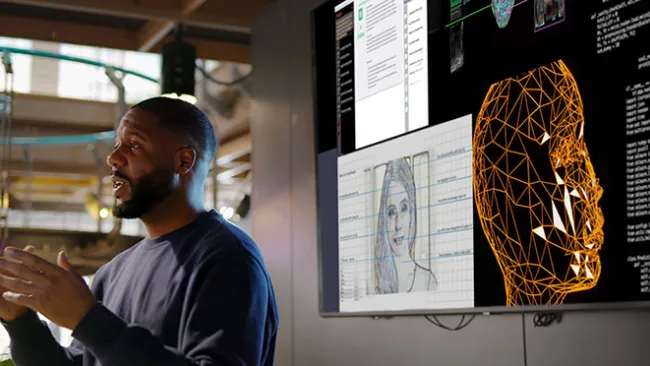The AI landscape is evolving so quickly, it seems like nearly every day there’s another “shiny new object” promising to revolutionize customer experience (CX). As brands try to stay on the cutting edge of technology – and one step ahead of their competitors – the compulsion to adopt AI, and the sheer number of tools available, can be overwhelming.
But embracing new technology just for technology’s sake won’t work in the long run. Unless they’re part of a broader, cohesive strategy, investments won’t deliver the results you expect, and they’ll likely cost your brand time and money.
There’s a long list of failed attempts where brands tried to force the wrong AI solution into their CX. Chili’s ended up pausing a pilot program where robots seated guests and ran food to tables because the return didn’t outweigh the investment, and McDonald’s ended a test run of AI-powered chatbots at its drive-throughs when the bots repeatedly botched orders, just to name a couple examples.
It’s time to reframe how brands think about AI. Instead of getting lost in the sea of AI tools available, center your AI strategy around the people in your CX operation who stand to benefit from AI. It’s time to shift perspective, from the “what” to the “who.”
The main stakeholders in the contact center are associates, team leaders, CX leaders, and customers. Each has unique objectives and challenges, but they’re united as part of one cohesive CX ecosystem. And AI can benefit each persona in different, but connected, ways.
For associates, AI is a companion
New hires in the contact center want to excel in customer service and genuinely care about people. They want to help customers by giving them the answers they need and brightening their day. But their lack of experience could get the better of them; they have high-pressure jobs and could get tripped up by nerves and inexperience.
Associates have many challenges to juggle: high stress levels, a steep learning curve, measuring up to performance and quality expectations, a lack of confidence, and pressure to communicate clearly and accurately.
AI’s greatest benefit to associates is its ability to help them do their jobs better, with less stress, better results, and greater ease. Associates shouldn’t fear AI as something that will replace them; they should view it as a companion or assistant.
AI-powered tools can make many facets of their jobs easier. AI training simulations offer hands-on practice in a safe environment, real-time knowledge assist can instantly put information at an associate’s fingertips during interactions, intelligent summarization can make sense of complicated interactions, and accent softening and noise reduction can make interactions less frustrating.
Simply put, AI can tackle the parts of associates’ jobs they find the most frustrating and make them quicker and easier. This makes for a better associate experience and saves brands time, money, and headaches.
For team leaders, AI is an ally
Team leaders are usually customer service pros, having been star associates earlier in their career. They command respect in the contact center but genuinely care about their employees and want to see them thrive. But they often need to handle multiple issues simultaneously and can sometimes be a little impatient. They know what makes a great customer experience, so they expect associates to be efficient, knowledgeable, and customer-focused – and they look for ways to make their jobs easier.
Team leaders have a lot on their plates. Their biggest challenges are balancing administrative duties, maintaining team performance, staying motivated in their own job, and training and coaching each team member in a personalized way that resonates.
AI can be an ally that empowers these employees to be better leaders. Customized training simulations and performance dashboards allow them to create tailored training scenarios and identify areas for improvement. Leadership development programs can equip them with the tools and know-how they need to become more effective mentors. And AI-powered administrative support can automate routine tasks so they can focus on more strategic work.
With AI by their side, team leaders can spend more time on the parts of their job that matter most, making them more engaged in their work and driving more career growth for their team.
For CX leaders, AI is an advisor
Higher-level strategists and CX leaders are all about building the optimal customer experience and recognize the impact CX has on the company’s bottom line and brand loyalty. They’re no strangers to budget cuts and have the tough task of figuring out how to deliver the best possible CX without breaking the bank.
Their decisions can only be as good as the data they’re given, so access to actionable insights is crucial to their success. They also need to get department leaders to work together if they’re going to drive ROI.
These employees are tasked with turning data into insights, identifying patterns and outliers, managing fraud, and growing contact center revenue. Each objective brings unique challenges and obstacles.
AI should act as an advisor to CX leaders, helping them make more informed business decisions. AI-powered insights can uncover new ways to innovate, identify cost reduction opportunities, enhance collaboration, and optimize performance. AI tools can also provide strategic workforce planning and automation to lower costs without sacrificing customer satisfaction.
For customers, AI is a concierge
When customers have problems, they reach out to the contact center and expect a resolution – fast. Their demands typically aren’t unreasonable; they just want a quick solution and get frustrated when things are harder than expected. They can become easily frustrated by inefficient delays and issues that require more than one call.
There are many things can aggravate an already-frustrated customer trying to get support: overly complicated processes that make it too hard to get answers, inconsistent information depending on which associate they speak with, long wait times, language barriers when communicating with customer support, and the inability to resolve issues.
AI should be a concierge for customers, helping them connect to answers more easily and quickly. Self-service tools can empower them to resolve their own issues (on their own time and in their preferred channel) and seamlessly connect them to an associate when needed. And the customer data that AI can capture and analyze across all touchpoints can help brands deliver a more personalized and proactive experience that grows satisfaction and loyalty.
Prioritize people in AI investments
Choosing the best AI tools for your employees, customers, and bottom line may seem daunting. A people-focused approach will help inform strategize, prioritize investments, and ensure you’re getting the most from the AI tools you choose and the people using them.
In addition to making your contact center more efficient and reducing overall cost to serve, the right AI solutions will make your associates, team leaders, CX leaders, and customers happier – and more likely to remain loyal to your brand.

















